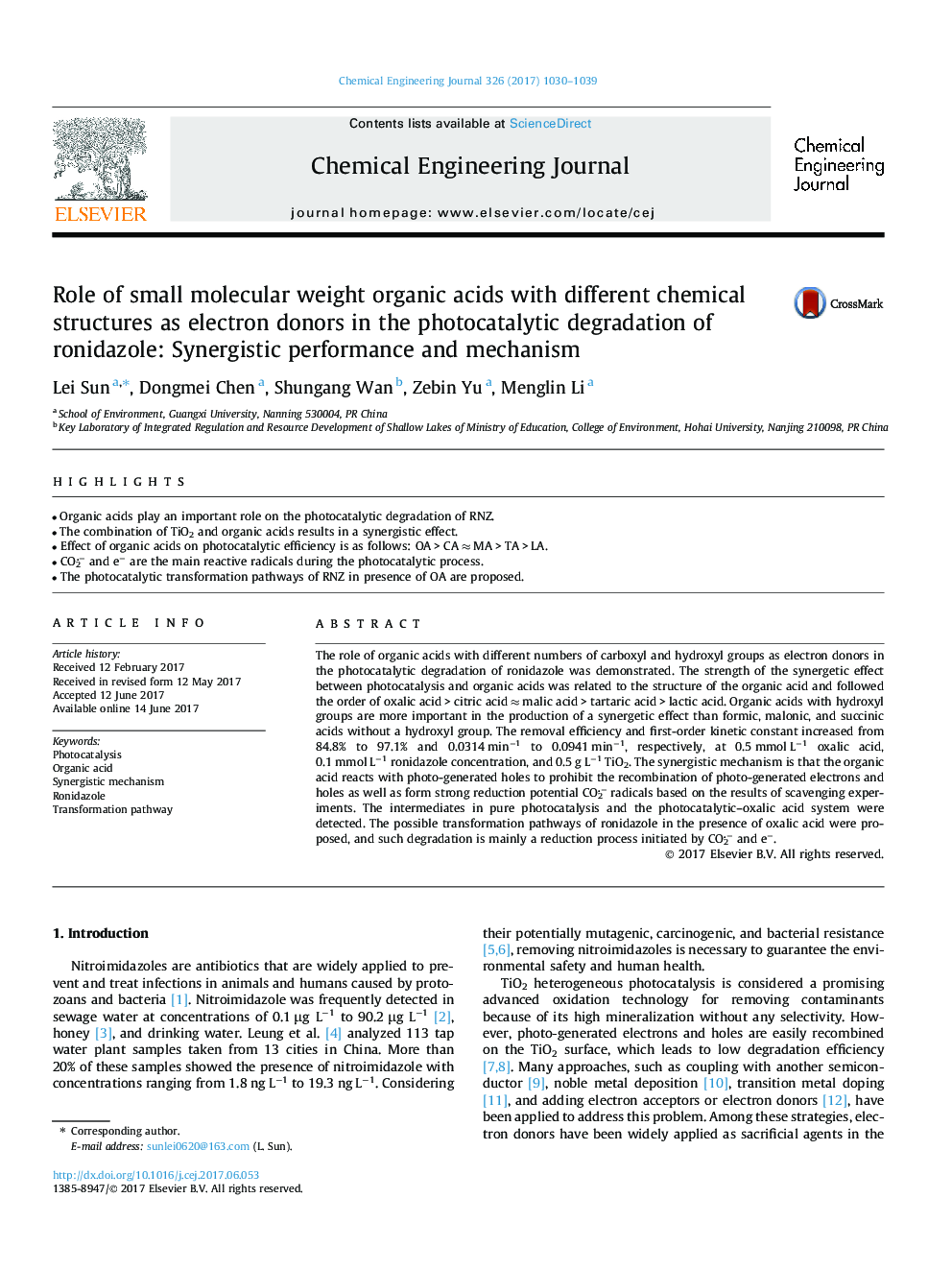| کد مقاله | کد نشریه | سال انتشار | مقاله انگلیسی | نسخه تمام متن |
|---|---|---|---|---|
| 6465538 | 1422952 | 2017 | 10 صفحه PDF | دانلود رایگان |
- Organic acids play an important role on the photocatalytic degradation of RNZ.
- The combination of TiO2 and organic acids results in a synergistic effect.
- Effect of organic acids on photocatalytic efficiency is as follows: OA > CA â MA > TA > LA.
- CO2â and eâ are the main reactive radicals during the photocatalytic process.
- The photocatalytic transformation pathways of RNZ in presence of OA are proposed.
The role of organic acids with different numbers of carboxyl and hydroxyl groups as electron donors in the photocatalytic degradation of ronidazole was demonstrated. The strength of the synergetic effect between photocatalysis and organic acids was related to the structure of the organic acid and followed the order of oxalic acid > citric acid â malic acid > tartaric acid > lactic acid. Organic acids with hydroxyl groups are more important in the production of a synergetic effect than formic, malonic, and succinic acids without a hydroxyl group. The removal efficiency and first-order kinetic constant increased from 84.8% to 97.1% and 0.0314 minâ1 to 0.0941 minâ1, respectively, at 0.5 mmol Lâ1 oxalic acid, 0.1 mmol Lâ1 ronidazole concentration, and 0.5 g Lâ1 TiO2. The synergistic mechanism is that the organic acid reacts with photo-generated holes to prohibit the recombination of photo-generated electrons and holes as well as form strong reduction potential CO2â radicals based on the results of scavenging experiments. The intermediates in pure photocatalysis and the photocatalytic-oxalic acid system were detected. The possible transformation pathways of ronidazole in the presence of oxalic acid were proposed, and such degradation is mainly a reduction process initiated by CO2â and eâ.
Journal: Chemical Engineering Journal - Volume 326, 15 October 2017, Pages 1030-1039
